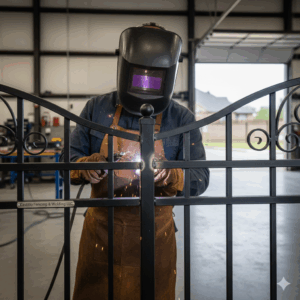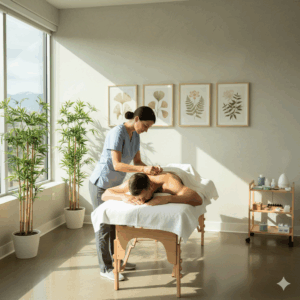The healthcare industry is constantly evolving, and with it, the spaces where care is delivered. Healthcare interior design plays a crucial role in creating environments that promote healing, comfort, and efficiency. As we move forward, several key trends are emerging in healthcare interior design that are worth noting. Here are five trends that are shaping the future of healthcare spaces.
1. Biophilic Design
Biophilic design is gaining traction in healthcare settings as it emphasizes the connection between nature and the built environment. This approach incorporates natural elements into healthcare interior design spaces to enhance patient well-being and reduce stress.
-
Natural Light: Maximizing natural light through large windows and skylights can significantly improve the mood and comfort of patients and staff alike. Studies have shown that exposure to natural light can lead to faster recovery times and improved mental health.
-
Greenery and Natural Materials: Incorporating plants, wood, and stone into the design can create a calming atmosphere. Many healthcare facilities are now including indoor gardens, green walls, and natural materials in their interiors to foster a sense of tranquility.
2. Patient-Centered Design
Patient-centered design focuses on creating environments that prioritize the needs and preferences of patients. This trend is about more than just aesthetics; it’s about enhancing the overall patient experience.
-
Comfort and Privacy: Designing private patient rooms with comfortable furnishings and adequate space for family members can significantly improve the patient experience. Features like adjustable lighting and temperature controls allow patients to customize their environment.
-
Family-Friendly Spaces: Healthcare facilities are increasingly incorporating family lounges and waiting areas that are welcoming and comfortable. These spaces provide a supportive environment for families during stressful times.
3. Flexible and Adaptable Spaces
The need for flexibility in healthcare design has become more pronounced, especially in light of recent global health challenges. Facilities must be able to adapt to changing needs, whether that means accommodating more patients or reconfiguring spaces for different types of care.
-
Modular Design: Modular furniture and movable partitions allow healthcare providers to quickly reconfigure spaces as needed. This adaptability is essential for responding to fluctuating patient volumes and evolving care models.
-
Multi-Functional Areas: Designing spaces that can serve multiple purposes—such as a waiting area that can be converted into a consultation room—enhances the efficiency of healthcare facilities.
4. Technology Integration
As technology continues to advance, healthcare facilities must incorporate these innovations into their design. This includes everything from telehealth capabilities to advanced medical equipment.
-
Smart Room Features: Many modern healthcare facilities are integrating smart technology that allows patients to control their environment, such as lighting, temperature, and entertainment systems, through user-friendly interfaces.
-
Telehealth Capabilities: With the rise of telehealth, designing spaces that facilitate virtual consultations is becoming increasingly important. This may include dedicated telehealth rooms equipped with the necessary technology for remote consultations.
5. Sustainability and Eco-Friendly Practices
Sustainability is a growing concern in all industries, and healthcare is no exception. Many healthcare facilities are adopting eco-friendly practices in their interior design to reduce their environmental impact.
-
Sustainable Materials: Using eco-friendly materials, such as recycled or rapidly renewable resources, can significantly reduce a facility’s carbon footprint. Designers are increasingly opting for low-VOC paints, sustainable flooring, and energy-efficient lighting.
-
Energy Efficiency: Incorporating energy-efficient systems, such as LED lighting and smart HVAC systems, not only benefits the environment but also reduces operational costs for healthcare facilities.
Conclusion
The trends in healthcare interior design are evolving to meet the changing needs of patients, providers, and the environment. By embracing biophilic design, focusing on patient-centered solutions, creating flexible spaces, integrating technology, and adopting sustainable practices, healthcare facilities can enhance the patient experience and improve outcomes. As the industry continues to evolve, staying informed about these trends will be essential for healthcare providers looking to create spaces that are not only functional but also healing and welcoming.
What People Also Ask
What is healthcare interior design?
Healthcare interior design refers to the planning and design of interior spaces in healthcare facilities, such as hospitals, clinics, and nursing homes, with a focus on functionality, aesthetics, and patient well-being.
Why is biophilic design important in healthcare?
Biophilic design is important in healthcare because it enhances patient well-being by incorporating natural elements, which can reduce stress, improve mood, and promote faster recovery.
How does patient-centered design improve healthcare facilities?
Patient-centered design improves healthcare facilities by prioritizing the needs and preferences of patients, leading to enhanced comfort, privacy, and overall patient satisfaction.
What role does technology play in healthcare interior design?
Technology plays a crucial role in healthcare interior design by enabling smart room features, facilitating telehealth consultations, and improving the overall efficiency of healthcare delivery.
How can sustainability be integrated into healthcare design?
Sustainability can be integrated into healthcare design by using eco-friendly materials, implementing energy-efficient systems, and adopting practices that reduce the environmental impact of healthcare facilities.








